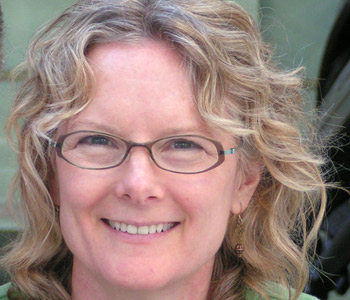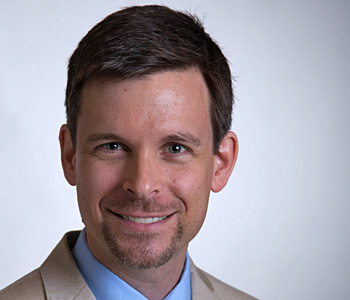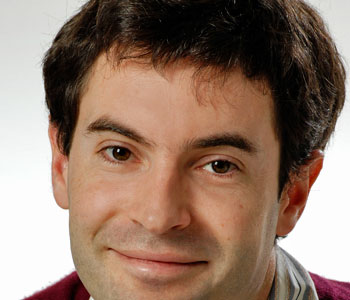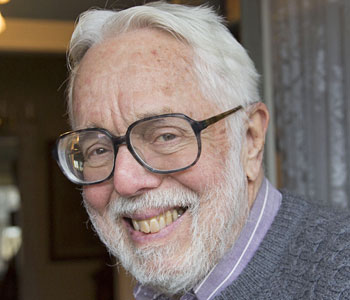Brandon L. Garrett
Autopsy of a Crime Lab: Exposing the Flaws in Forensics
University of California Press
264 pages, 6 x 9 inches
ISBN 9780520389656
“That’s not my fingerprint, your honor,” said the defendant, after FBI experts reported a “100-percent identification.”
They were wrong.
The judge sided with the FBI and ordered the defendant, Brandon Mayfield detained as a material witness to terrorism. Mayfield knew that he was innocent. The FBI placed Mayfield under twenty-four-hour surveillance, and then arrested him. Mayfield’s lawyer counseled him that he could be detained indefinitely and might face the death penalty.
Then, on May 20, 2004, the prosecutor stood up in court and told the judge something unexpected: that morning the government “received some information from Spain” which “casts some doubt on the identification.” Spanish authorities “determined completely” that the print belonged to a known Algerian terrorist. The FBI agreed to release Mayfield, dropped all charges a few days later, apologized, and a federal investigation followed.
We tend to all assume that evidence like fingerprint evidence is nearly infallible. Fingerprint comparisons are fallible, however, including because of a lack of objective standards and the influence of bias. Autopsy of a Crime Lab is the first book to catalog the sources of error and the faulty science behind a range of well-known forensic evidence, from fingerprints and firearms to algorithms.
This book poses questions that should be asked in courtrooms every day: Where are the studies that validate the basic premises of widely accepted techniques such as fingerprinting? How can experts testify with 100-percent certainty about a fingerprint, when there is no such thing as a 100-percent match? Where is the quality control in the laboratories and at the crime scenes? Should we so readily adopt powerful new technologies like facial recognition software and rapid DNA machines? And why have judges been so reluctant to consider the weaknesses of so many long-accepted methods?
Forensic analysis is perhaps best known through its fictional portrayals in crime novels and television courtroom dramas: A crime occurs, law enforcement gathers evidence from the scene, and a team of dedicated forensic analysts interrogate that evidence in a crime lab using cutting-edge scientific methods. Potential suspects get fingerprinted, an identifying “match” gets made with the help of government databases, and judges allow prosecutors to introduce the unbiased testimony of proven experts in the field who trot out their damning, seemingly incontrovertible forensic conclusions to an attentive jury.
Autopsy of a Crime Lab exposes some of the most common misconceptions about forensic analysis and examines their collective impact on the criminal justice system. Through detailed examinations of the forensic failures responsible for the wrongful convictions of exonerees, the book categorizes the errors made by forensic “experts,” identifies how and why these mistakes continue to occur, and argues forcefully for a comprehensive, science-based, multi-pronged approach to restore integrity to the essential discipline of forensics.
I decided to become a law professor because of my work representing exonerees who had been wrongly convicted, including based on false bitemark, hair comparison, and blood typing evidence. Their bravery and resilience inspired me, and I wanted to work to make sure that our criminal legal system and our scientific institutions never let us down so terribly ever again.
Consider the 1982 “bite mark case” in Newport News, Virginia, that resulted in a murder conviction and death sentence for Keith Allen Harward, who was incarcerated for 33 years before being exonerated by DNA analysis. That story is told in Chapter 2 of the book. Readers will be shocked to hear how flawed forensic analysis leads to the conviction of innocent people and how little has changed in response to such wrongful convictions.
One dentist testified to “a very, very, very high degree of probability those teeth left that bite mark,” referring to Keith Harward’s teeth. Three times “very” must be a really good match. The dentist added, “My conclusion would be that with all medical certainty, I feel that the teeth represented by these models were the teeth that made these bite marks.”
“There are no differences?” asked the prosecutor. “I found absolutely no differences.”
Next, a second dentist testified that it was a “practical impossibility that someone else would have all [the] characteristics in combination.” Again, the prosecutor asked him to elaborate. He said that he had found “with reasonable scientific certainty, Mr. Harward caused the bite marks on the leg.” The prosecutor asked, “If you look hard enough, could you find someone with similar teeth, theoretically?” “I sincerely doubt that,” responded the dentist.
This testimony was incredibly forceful. The jury convicted Harward in September 1982 and sentenced him to death. After an appeal on a sentencing issue, in 1986, Harward was convicted at a second trial and sentenced to life without parole. By now, six different dentists had all said he made the bite marks.
By the early 2000’s, Harward had given up on appeals and post-conviction challenges. Another inmate, though, told him about the Innocence Project, and he sent a letter. The Innocence Project took his case and obtained access to crime scene material for DNA testing. The swabs taken from the victim, in multiple places, all shared a single male DNA profile. That profile belonged to another person, also a sailor on the USS Vinson. That man died in prison in Ohio over a decade before, while serving time for burglary and kidnapping. Harward was released in 2016, after thirty-three years in prison.
What went wrong? We now know that not only were the dentists making exaggerated claims, but they were flat-out wrong that all of those details matched Harward’s teeth. What are the chances that six dentists separately reached the same false conclusion? They may have all been biased by pressure from police, and by each other. Before his first trial, Harward had been arrested in an altercation with his girlfriend, where she grabbed him and he bit her arm. She dropped the charges. But the police and prosecutors clearly decided he was a “biter,” and that may have encouraged the dentists to change their story to fit what the prosecutors wanted: a conviction. The dentists convicted an innocent man and let a murderer go free. Yet, at the time, the “bite mark case” was celebrated as a triumph of forensics.
This book examines cases like this and the scientific concerns that underlie them. The National Academy of Sciences, in an important 2009 report, concluded that there needs to be more research “to confirm the fundamental basis for the science of bite mark comparison.” They said that it has “not been scientifically established” that human dentition is unique. The scientists who wrote an influential 2016 White House report concluded that since no valid studies of error rates have been done, bite mark techniques were simply not valid. Yet, to this day, judges have not stepped in to put an end to this troubling forensic testimony.
Back in 2009, the National Academy of Sciences concluded: “With the exception of nuclear DNA analysis … no forensic method has been rigorously shown to have the capacity to consistently, and with a high degree of certainty, demonstrate a connection between evidence and a specific individual or source.” The system implications of this critique of common forensic methodologies used by law enforcement have never been fully grappled with. As this book describes, there is a need for an overhaul of forensics to restore the faith placed in forensic analysis by the criminal justice system.
The National Academy of Sciences report warned that a “lack of independence” in crime labs can damage the objectivity of forensic science. Yet very few labs in the United States are independent. We need to regulate crime labs, to make them independent of law enforcement, with sound quality controls, and accountability to the public. This book describes examples where labs have made the leap to embrace scientific methods and accountability. Forensic science has received a wake-up call, due to wrongful convictions, lab audits and scandals, and scathing reports by the broader scientific community. Fortunately, there is now a clear a path to reform.




We don't put paywalls. We don't distract you with ads. We don't sell your data.
Please help to keep this running!